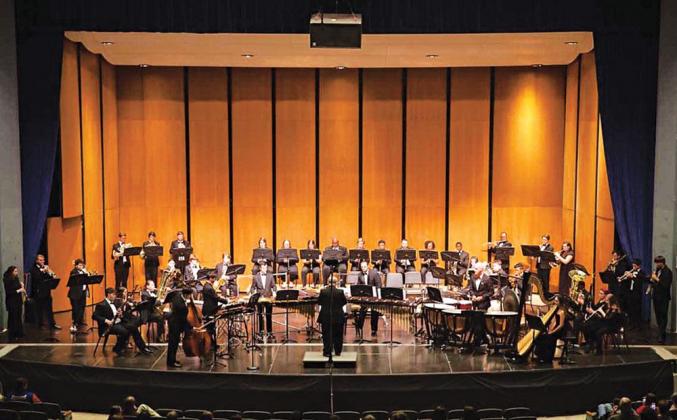
The University’s concert band will explore New Orleans’ complicated musical heritage when it performs next month as part of symposium marking the Crescent City’s 300th birthday.
The group will interpret “Congo Square” and “Storyville.” The pieces recreate two spaces – one public, the other more intimate – that influenced the development of one of the city’s greatest exports, its music.
James Syler, a music instructor at the University of Texas at San Antonio, composed both. Neither has been performed in New Orleans before, said Dr. William J. Hochkeppel, UL Lafayette director of bands, who conducts the wind ensemble.
“There’s no place where they deserve to be played more. We are telling history with music,” Hochkeppel said.
The performance begins at 1 p.m. March 11, the fourth and final day of “Making New Orleans Home: A Tricentennial Symposium.” The Historic New Orleans Collection and the City of New Orleans’ 2018 Commission are the symposium’s co-sponsors. [See the full schedule at hnoc.org/events/makingneworleanshome].
The wind ensemble concert will take place at the University of New Orleans’ University Center, 2000 Lakeshore Drive.
Commentaries by Syler and author Freddi Williams Evans will accompany the ensemble’s performance. The University of Louisiana Press published Evans’ “Congo Square: African Roots in New Orleans” in 2011, and her companion book for children, “Come Sunday,” last year.
In 1718, Jean-Baptiste Le Moyne, Sieur de Bienville, chose to establish a new settlement at a “fine crescent” of the Mississippi River. Bienville, then commandant general and governor of the French colony of La Louisiane, named the site for the Duc d’Orléans.
The following year, Bienville’s government brought the first enslaved Africans to Louisiana. In 1724, the colonial government instituted the Code Noir. The Black Code restricted the activities of slaves, but also designated Sundays as a day of rest.
Slaves used Sundays to gather throughout the city until an 1817 ordinance confined their assemblies to one public space: Congo Square, a five-acre tract at the upper edge of the French Quarter.
The square became a site of cultural preservation over which hung the specter of slavery, Evans wrote in her 2011 book’s introduction.
“In Congo Square on Sunday afternoons, African descendants spoke and sang in their native languages, practiced their religious beliefs, danced according to their traditions, and played African-derived rhythmic patterns on instruments modeled after African prototypes,” Evans wrote.
Those rhythms became knitted in the city’s musical fabric, and Congo Square was “ground zero for African culture in New Orleans,” Evans concluded.
Storyville was a similarly complex, and musically influential, setting. Officials established the legalized red-light district in 1897 to contain – and ostensibly control – prostitution within a 13-block section of the city.
Its brothels, saloons and barrelhouses employed musicians Jelly Roll Morton, “Bunk” Johnson, “King” Oliver and Louis Armstrong, among others.
Syler said Storyville “produced one of the great ironies in the history of American music – that out of a pit of human despair, violence and abuse, this place would foster the music and musicians who would have a fundamental influence in the formation of early jazz, a joyful, energetic and hopeful music.”
Syler wrote “Storyville” in 1996. He produced “Congo Square” in 2014. UL Lafayette was one of 12 universities nationwide that commissioned the latter piece.
Hochkeppel conducted the wind ensemble when it first performed “Congo Square” during a campus concert in 2015.
Syler’s compositions “have atmosphere,” Hochkeppel said. “You know how sometimes you can feel the fog? I feel like I can touch this music.”
“Congo Square” overlaps African drums, Creole melodies and early jazz riffs. “Storyville” similarly combines the types of music a person might have heard while visiting there – jazz, ragtime and blues.
At one point, Syler introduces a hymn into the melody, a reminder, Hochkeppel said, that underneath Storyville’s façade of pleasure “was desperation and sadness, as well as joy.”
“Both ‘Congo Square’ and ‘Storyville’ have social questions imbedded in them. It makes people think. It makes people feel. It’s serious music, but there’s a message there.”
